For indoor and outdoor finishing works water-based paint is widely used. If you are planning a renovation, you will most likely have to deal with the choice of this material. In order not to be mistaken, it is better to prepare in advance and study as much information on this topic as possible. It is useful to know what kind of paintwork material it is, what its main properties and technical characteristics are, what varieties there are, and why most paints are actually called water-dispersion.
To understand what is water-based or water-dispersion paint, you need to consider in detail its composition and method of obtaining. Behind complex chemical names lie simple substances familiar to any builder: PVA glue, silicone, latex, chalk and others. Of course, these paints have both advantages and disadvantages, and they also need to be dealt with.
Wall painting is back in fashion
Basic and additional components and their meaning
The basis of water-based paints is water. are in suspension in water tiny particles polymers. Everyone who has taken a school chemistry course knows that an "emulsion" is a dispersion of one liquid in another. Since in the case of paint we are talking about solid particles suspended in aquatic environment, correctly call this material "water-dispersion paint."
Depending on which subcategory of paints we are talking about, polymers can be different. In addition to the polymer component, manufacturers are trying to enrich their products with as many useful additives as possible. The composition includes:
- plasticizers;
- defoamers;
- dispersants;
- antiseptics and fungicides;
- antifreeze and others.
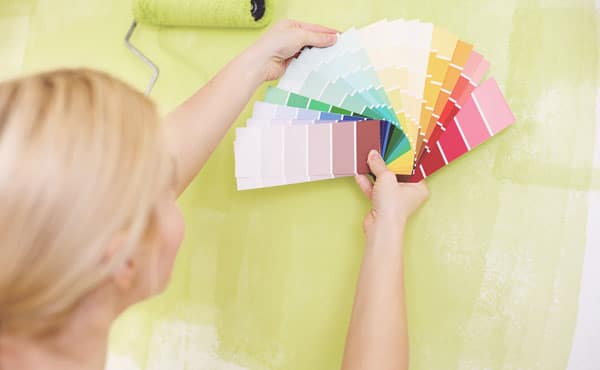
In the process of choosing a color
Film former (emulsifier) - a fundamental component of water emulsion paint. It defines its properties and, as a consequence, its scope. Polyvinyl acetate (PVA), butadiene-styrene, styrene-acrylate and acrylate are used as a film former. Depending on the film former, the marking of the paint depends.
Mineral components are used as a filler: chalk, mica, barite, talc, or combinations thereof in various proportions. To give a white color to the water emulsion, a white pigment is added to it: titanium dioxide or zinc oxide. The thickener is carboxymethyl cellulose, known as CMC glue.
If we talk about the composition in percentage terms, then the components are distributed as follows:
- 50-60% - water dispersion (polymer suspension in aqueous solution);
- 35-40% - filler and pigments;
- 5-8% - plasticizer and thickener;
- 1-7% - all other additives.
Undeniable and time-proven benefits
Water-based paints are very widely used in construction, as they have a number of significant advantages over other paints and varnishes:
- drying speed;
- safety;
- available solvent;
- complete freedom of choice colors;
- durability;
- no smell.

Variety of shades
Water-based paints and varnishes really dry quickly. Already a few hours after application, the water evaporates, forming a thin polymer film on the painted surface. During the drying process, there are no foreign objects in the room. chemical odors, which are present when using paints and enamels on oil based.
This material does not contain toxic substances that would be harmful to human health or the environment. You can paint without special protection: a respirator, a mask. If the substance gets on the skin, it can be easily washed off with plain water. To work with water-based paint for walls and ceilings, there is no need to purchase a solvent, it is enough pure water.
Water-based paint practically does not crumble. If you follow the operating conditions, the coating lasts 15 years or more without any signs of wear. The material does not turn yellow, does not fade under the influence of ultraviolet radiation, does not crumble or become covered with bubbles.
As for the color scheme, it's up to the buyer. As a rule, they buy the right amount of white paint and a special concentrated pigment. It is added to the base before obtaining desired shade. Thus, by adjusting the amount of pigment (color) and base, you can achieve any shade.
Disadvantages and weaknesses of water emulsion
Not always the use of paint on water based is justified. In some situations, it is better to choose a different material, since water-dispersion paints have their drawbacks:
- unstable to mechanical stress;
- does not like water;
- not suitable for all surfaces.

Almost perfectly flat surface
The painted surface wears out over time, especially in those places where it is regularly subjected to mechanical stress. In addition, in places where the walls are often dirty (near switches, sockets, doorways), which means that they have to be constantly washed with detergents, the paint is gradually washed off.
Almost everything can be painted with a water-based emulsion, but for metal surfaces it is better to choose a different type paintwork materials.
- Firstly, due to poor adhesion, sufficient adhesion is not achieved.
- Secondly, paints based on water dispersion do not protect metal from corrosion, as alkyd and oil enamels do.
Varieties of water-based paints and types by composition
Depending on the film former and other components, four types of water-based paint are distinguished:
- acrylic;
- silicone;
- silicate;
- mineral.
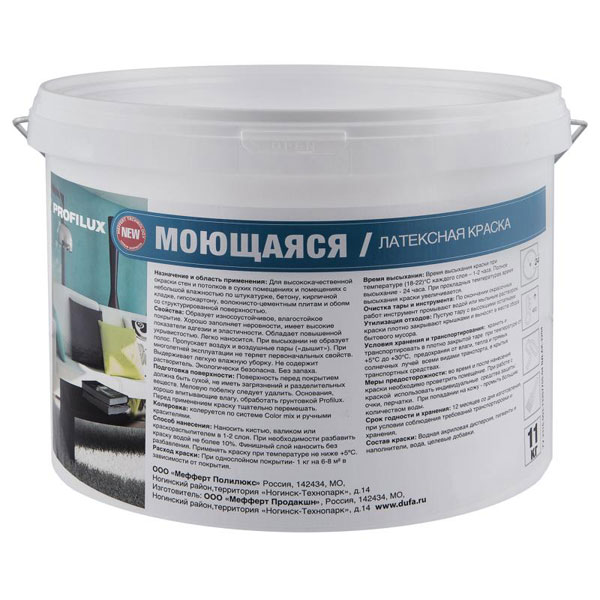
With added latex
Each of them has its own area of application and significant differences v price category.
Acrylic - the most common paint
The most common water-dispersion paint on the construction market is acrylic. Acrylic resins act as an emulsifier. They do an excellent job. Acrylic dyes are used for both indoor and outdoor use. They are painted brick walls, reinforced concrete structures, wood, plastered surfaces and even glass.
Acrylic is an expensive polymer. As an economy, a composition based on acrylic copolymers such as styrene-acrylate was invented. This significantly reduces the cost of the product, and practically does not affect the quality. For household repair styrene-acrylate compounds are quite enough, especially since they are marked in the same way as paint based on pure acrylic.
To give the water-based emulsion water-repellent properties, in acrylic compounds add latex. This substance protects the resulting film from the effects of water. Surfaces painted latex paint can be washed without problems. In addition, latex "tightens" and hides small cracks on the surface - up to 1 mm.
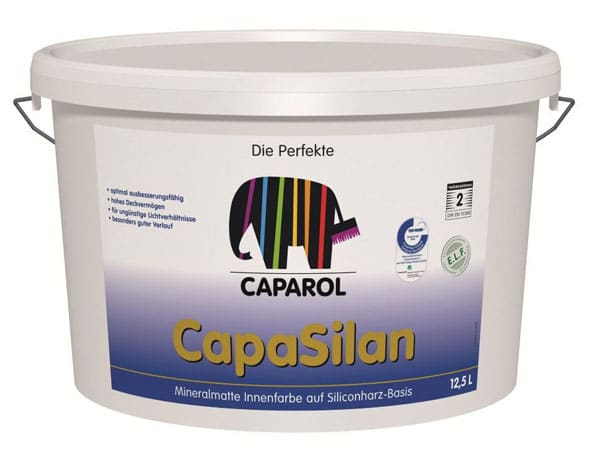
Example of silicone-containing material
To provide surfaces with protection from moisture and steam, silicone is used for ceilings in the bathroom and in the kitchen. water-based paint. Elastic silicone, dispersed in an aqueous medium, forms a strong protective covering. Silicone is more elastic than latex and hides twice as large cracks on the surface - up to 2 mm.
The peculiar vapor barrier provided by silicone water emulsion makes this type of coating ideal for painting surfaces in rooms with high humidity and significant temperature fluctuations. The composition contains an antiseptic that prevents the appearance of mold.
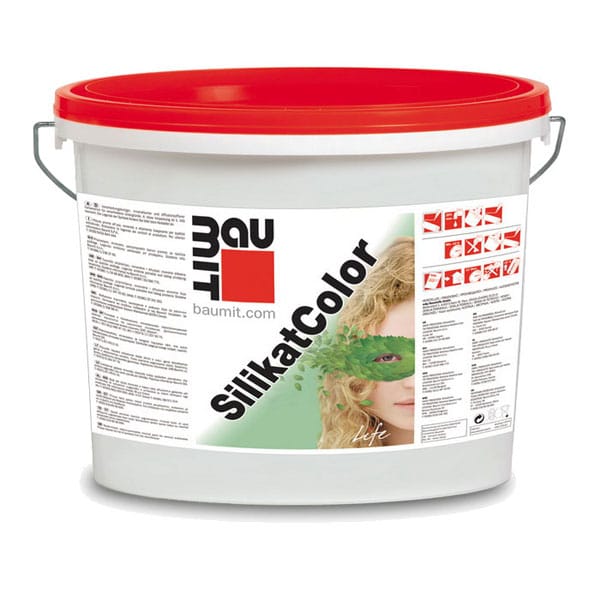
Durable silicate paint
Silicate - for outdoor use for many years
silicate paints- outdoor solution. special aesthetic properties they don't possess. The choice of colors is limited, since the composition is too aggressive and does not provide for the addition of extraneous colors. The hiding power of silicate dye is also not the highest. The main advantage that makes it indispensable for working with facades is weather resistance and durability.
Silicate water-based paint is made on the basis of liquid glass. Chalk, mica, talc and other minerals act as a filler. Silicon resins are present in some formulations. If the operating conditions are observed, you can count on 20 years of service for the painted surface. The material is quite transparent.
Short-lived mineral - losing ground
Mineral water emulsion contains lime and cement. It is usually used for coloring concrete structures and brickwork. V cosmetic repairs it is not used. It performs a protective function - it protects the painted surface from moisture and light.
Since the service life of mineral paint is short, it must be applied regularly. This causes a steady decline in consumer demand for this finishing material. They are gradually replaced by others, more modern views LKM.
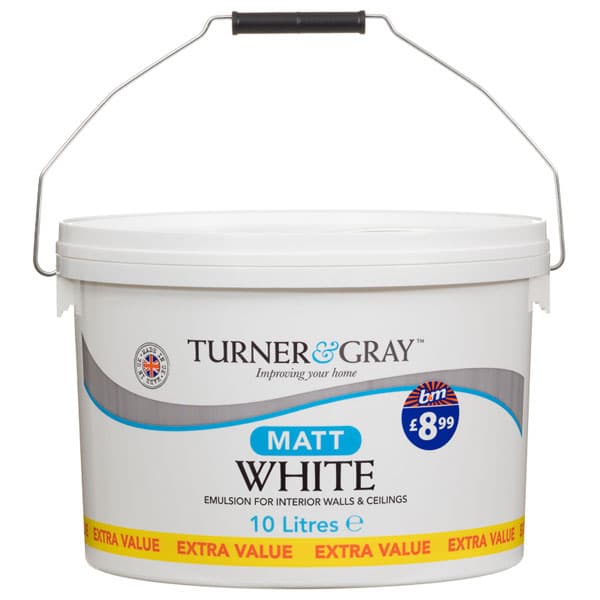
White water emulsion
Competent choice of coatings according to the method of experts
If your eyes are wide open in a store near a showcase with water-based paints for walls and ceilings, it will be useful for you to familiarize yourself with their main technical characteristics and understand how they are labeled. One of the popular brands VEAK 1180 is suitable for repairs in 80% of cases, so it needs to be given special attention.
Marking - material passport and a hint to the buyer
Just look at the label to find out the composition, scope and other useful information. So, the following information should be indicated on the package:
- "VD" - water-dispersion;
- "VE" - water-based.
Then follows symbol polymer used:
- "VA" - based on polyvinyl acetate;
- "VS" - polyvinyl alcohol;
- "KCh" - butadiene-styrene;
- "AK" - styrene-acrylate or acrylate.
The numbers that are present in the marking also have a certain meaning and are deciphered as follows:
- "1" - suitable for outdoor use (weather resistant);
- "2" - apply indoors.
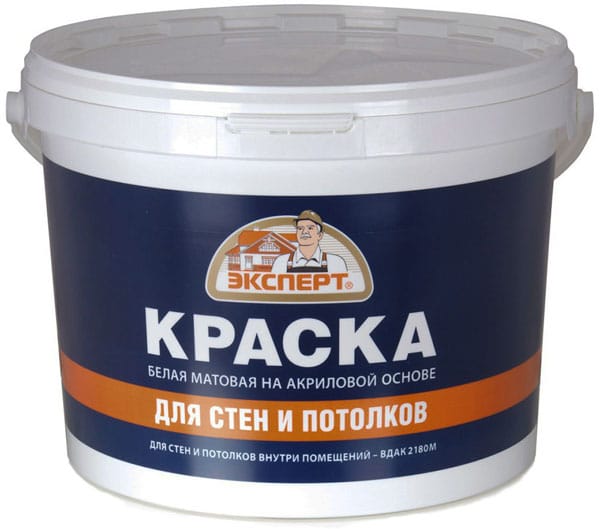
The marking shows: acrylic for internal works
In addition to labeling, pay attention to normative document according to which the material is produced. A good water-based paint for walls and ceilings is made in accordance with GOST. The full name of this document is GOST 28196-89. Instances that meet the specifications are considered to be of lower quality, since a decent deviation from the quality standard is allowed when compiling these same specifications.
What specifications to pay attention to
The most important technical characteristics of water-based paint that matter when choosing:
- compound;
- approximate expense;
- viscosity;
- specific gravity;
- storage rules;
- storage period.
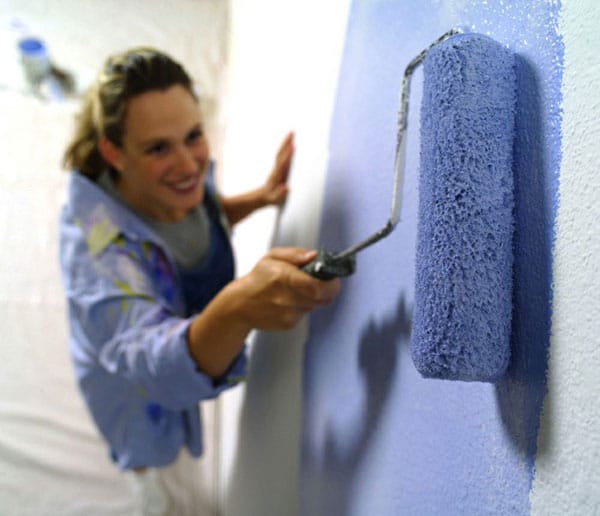
Applying one layer
Each of these specifications should be considered separately. If you already know everything about the composition of water-based paint, then it is advisable to dwell on the remaining parameters again.
Consumption. This feature has great importance at the time of buying. It determines how many liters you will need to paint the selected area. Consumption is measured in ml/m2. The indicator can vary with a sufficient deviation both up and down. It depends on the porosity of the material to which the finish will be applied. To reduce consumption, use a primer.
Viscosity. This parameter determines the consistency. Low viscosity indicates that there is too much water in the composition. Simply put, the paint is too thin. Important:
- To apply a water-based emulsion by spray, the viscosity must be lower than when working with a brush or roller, within 25 seconds.
- For manual application, the viscosity should not be lower than 45 s.
This parameter can be measured using a viscometer.
Specific gravity is measured in kg/l. It has a great influence on the opacity. Exceeding the norm specific gravity leads to the fact that it is required large quantity layers for coloring. Also, the speed of drying depends on this indicator. Normal specific gravity for water dispersion paint is 1.3 kg/l, drying speed is from 2 to 24 hours.
You can also choose between glossy and matte surface after drying. Store this paint in a tightly closed container, protected from sunlight room. Under no circumstances should freezing be allowed. Under normal conditions, water-based paint can be stored for up to two years.
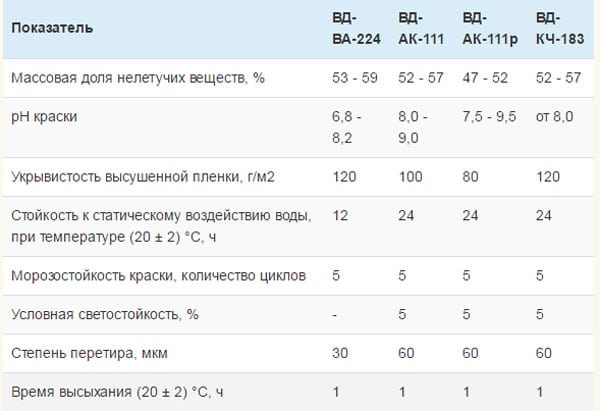
Characteristics of popular varieties
Specifications VEAK 1180
One of the most popular water-soluble paints is VEAK 1180. According to the marking, it can be determined that it is made on the basis of an aqueous emulsion (VE), and acrylic or its derivatives (AA) act as a film-forming polymer.
The technical characteristics of VEAK 1180 water-based paint are as follows:
- conditional viscosity - 20-42 s;
- consumption - 160 g / m2;
- the content of non-volatile substances - 60%;
- drying speed - 15 hours;
- frost resistance - 4-5 cycles.
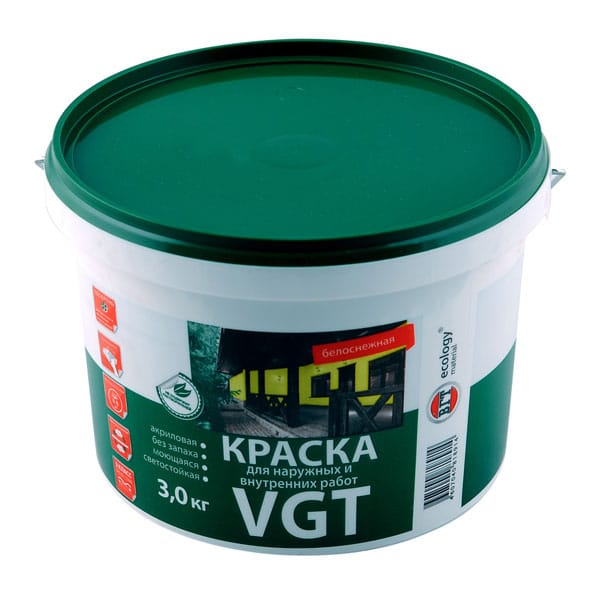
With such indicators, water-based paint is more often used for interior work, for example, for walls and ceilings. It adheres well to prepared concrete. brickwork, plaster, and metal surfaces pre-primed. Initially, a white pigment is used, but this does not prevent it from being tinted in any other color.
Given that the cost of a kilogram of VEAK 1180 is on average 500 rubles, and its characteristics are quite high, it can be argued that this dye is the best value for money.
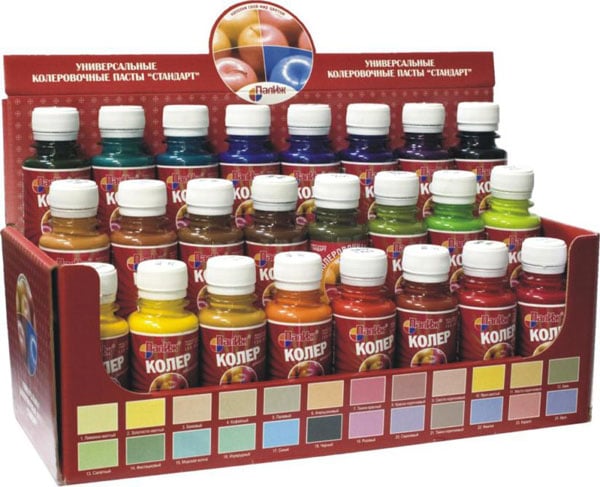
Colors for every taste
Rules and nuances of applying to walls and ceilings
The rules for applying water-based paints with your own hands are similar to universal instructions for all paintwork materials:
- Start by preparing the surface. All old coatings must be removed. Fill cracks and other damage, if any. Treat the dried putty with sandpaper.
- Interior painting work winter time should begin by warming the paint to room temperature. To do this, the container is brought into the room and left for a day in closed. After opening, remove the film from the surface and any lumps that may have formed during storage.
- Walls and ceiling should be primed. It is better to use a special primer, but in case of its absence, you can do without a small amount paint diluted with water. This option has the right to exist, but for economic reasons it is desirable to use a primer - it is cheaper.
- If you plan to tint water-based paint, calculate the approximate cost for the entire room. Then add 10% to the value obtained, and only after that proceed with the addition of the pigment. You will almost certainly overspend the material, but if the shaded mixture runs out ahead of time, it will be very difficult to achieve exactly the same shade.
- The paint is applied with a roller or brush. With a spray gun, this work can be done many times faster and with significant material savings. Carefully read the instructions on the can and sprayer to use the material of the desired viscosity.
![]()
Ceiling painting instructions
Water-based paint has so many undeniable advantages that it can rightfully be called a universal finishing material. The main thing is that it is easy and pleasant to work with her. Probably paint. small plot walls can be done by anyone who has ever held a brush in their hands. But painting the ceiling is a more difficult task. If you're not that good with a roller yet, there's always the option of going to a professional painter.
Increasingly in modern repairs water-based paint is used. And this is no longer the same paint based on water and lime, which was used to whiten the ceilings in Soviet apartments. Modern assortment paint and varnish products is simply amazing - now a lot of synthetic substances have been created that can give the paint the most important qualities: durability, environmental friendliness, good covering ability.
Water-based wall paint has become a leader among finishing materials, it is applied to textured and smooth plaster, wood and wallpaper. How not to get lost in the range of products and choose exactly what you need for a particular repair? How long does water-based paint dry, is it washable? - about all this in this article.
What is good water emulsion
Water-based (or, as it is also called, water-dispersion) paint consists of mineral or synthetic suspensions and coloring pigments dissolved in water. More precisely, paint particles do not dissolve in water, they simply mix with it, forming a homogeneous solution.
![]()
It is from these additives that the properties and quality of the dye depend. So, for example, a washable water-based emulsion should contain water-repellent particles, and abrasion-resistant should contain solid and durable substances.
Important! Water-based dyes can be used not only indoors, but also outdoors. There are special paints for facades, metal elements, concrete and others.
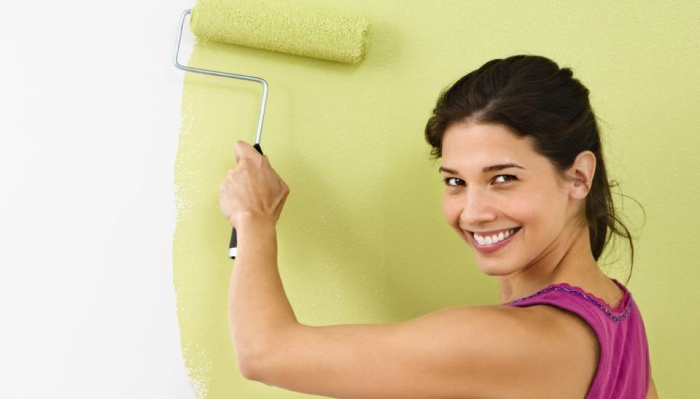
Water-dispersion paint is increasingly chosen for painting walls and ceilings in living rooms, offices, restaurants and other premises. Such popularity is facilitated by the qualities of this material, such as:
- Good adhesion. The dye adheres securely to the base material. As a result, the paint layer lasts for a long time, bubbles and exfoliated areas do not appear on the walls. It is possible to paint concrete, wood, plaster, metal and other mineral and synthetic surfaces with WD-dyes.
- Safety. The paint is absolutely non-toxic, it does not contain volatile substances, because it is based on water. The dye does not cause allergies, does not emit toxins even when heated. All living quarters, including bedrooms and children's rooms, can be painted with a water-based emulsion.
- Ease of application. Any wall can be painted handy tool(roller, brush, etc.). The material lays down in an even and uniform layer. When using a primer, one layer of paint may be enough, with each subsequent layer the shade of the walls becomes richer and brighter.
- Drying speed. It is only a couple of hours. It is necessary to dry the walls when room temperature, without additional sources heat.
- Fire safety. Unlike oil, alkyd enamels, water-based paint is not flammable.
- Variety of shades. Achieved with the help of tinting - in base paint white color add required amount coloring pigment. In this way, you can achieve the desired shade, and not start from the existing color scheme. But on sale there are not only white, but also colored water-based emulsions, which simplifies painting work.
- Durability. Depending on the composition of the water-based paint, the coating will last from 5 to 20 years without losing its original brightness and uniformity.
- Performance. They are at a high level - the walls can be washed, cleaned with abrasives or wiped with a dry cloth (this depends on the instructions on the paint label). There is paint washable, resistant to abrasion and so on.
Advice! Before applying the water emulsion to the metal, it is better to treat it with a special primer. This is necessary to prevent oxidation of the metal base, because VD-ink is made on the basis of water.
Which water emulsion is better to choose
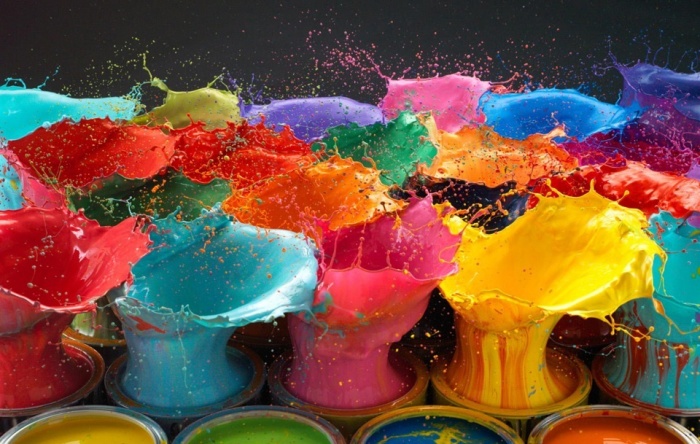
Today, four main types of water-based dyes are in great demand:
- Acrylic. The basis of this paint is acrylic resins. These substances provide the dye with plasticity and resistance to mechanical stress. The density and density of the acrylic water-based emulsion make it possible to mask small cracks on the surface (up to 1 mm in size). Such a composition is easily applied to the walls, does not flow, dries quickly, has no smell, which allows you to paint walls in living rooms and enclosed spaces. Dries acrylic coating within a few hours, after which a second layer can be applied. There are a lot of colors on sale, with their help you can achieve a unique shade, create own palette. Acrylic water emulsion - washable, walls will endure up to 5 thousand wet cleaning without losing color or texture. The coating is not so easy to damage or scratch, so acrylic dyes can be used in offices, trade pavilions and other public places.
- Silicone. The paint consists of silicone resins. Elastic substances help the paint lay down in an even and dense layer, you can paint over the walls even in one layer of silicone emulsion. This material is also quite plastic - it will fill cracks up to two millimeters wide, so you can do without preliminary plastering and priming. The cost of silicone paint is quite high, but it is considered very durable - the walls will remain beautiful years by ten. The main advantage of silicone water emulsion is vapor permeability. microscopic pores in paintwork remove moisture from the surface, allow the walls to "breathe". Such paint can be applied to brick, concrete, plaster, wood and other mineral surfaces - mold, perspiration and fungus will not appear on the walls. Most often, the walls of bathrooms, kitchens and basements are treated with silicone paints.
- silicate. These dyes contain liquid glass. Combining with water and colored pigments, the silicate turns into a thick and uniform paint. The coating forms a durable and dense film on the walls, capable of passing air and repelling moisture. The layer of silicate water emulsion is so strong that it can withstand both mechanical stress and atmospheric phenomena. The coating can be applied both indoors and on the outer walls of the house. The durability of the paint is provided for up to 20 years, and it costs less than silicone and acrylic dyes.
- Mineral water dispersion. This paint is the most affordable option in terms of price. It consists of slaked lime and a proportion of cement, tinted with special pigments. The layer of such a dye is quite thin, it must be applied in several layers. Mineral water emulsion is suitable only for interior work - it is environmentally friendly, but not washable, as it does not repel water. So that the walls can be washed, after painting they can be opened with a water-repellent varnish.
Attention! Any water-based emulsion contains latex, which gives the coating elasticity and resistance to cleaning and damage.
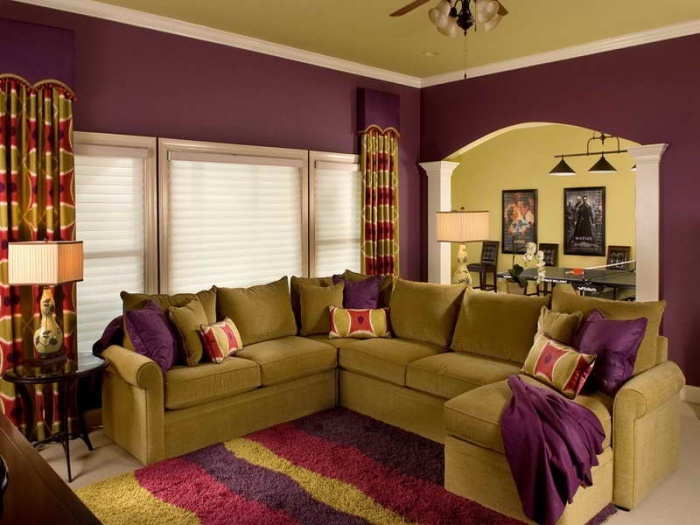
To choose the right water emulsion, you need to know about all its qualities. This information is easy to find on the material bank. They indicate not only the purpose of the dye (for indoor or outdoor use, for wet or dry rooms), but also give recommendations for the care of painted surfaces, tinting and application.
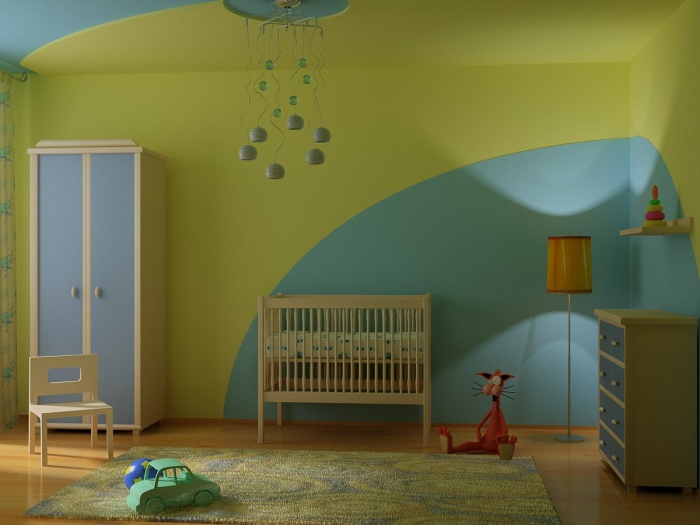
So, for a bathroom or kitchen, it is better to "fork out" for silicone dye. For a bedroom, living room or hallway, choose an acrylic water-based emulsion - it can be cleaned and washed. But for the children's room, mineral paint will be the safest - although it is not very resistant, it will easily withstand several years of operation (repairs in the nursery are done most often, because with age the child changes his tastes and preferences). The most difficult areas and corners of the house are best treated with silicate dyes - they are the most durable and resistant.
How else are water-based paints classified?

Besides chemical composition dyes also differ in texture. There are coatings that lay down in a thin and even layer, and there are paints that give texture, three-dimensional patterns. Such coatings are quite viscous and thick, they are applied with special textured rollers or sponges.

In addition, there are water emulsions:
- matte;
- glossy;
- semi-matte;
- semi-gloss.
Choosing a coating, you need to proceed not only from aesthetic considerations, but also take into account its practicality. For instance, glossy walls good where frequent cleaning is required - in kitchens, hallways and baths. Use there matte paint it is not worth it, because, by wiping certain places, it is easy to “oil” it - to polish it to a shine.

Advice! In order not to miscalculate, it is better to use "half measures" - semi-matte or semi-gloss water-based paint. They look good and are quite reliable in operation.
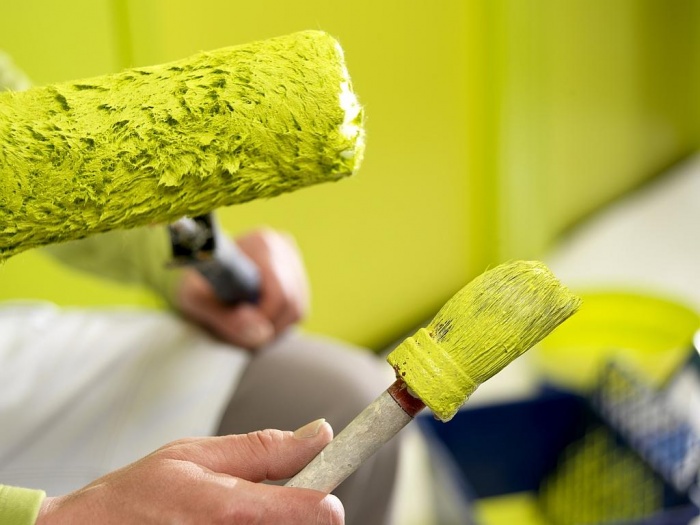
When buying water-based paint, you need to follow a simple instruction:
- Choose a coating that is suitable for specific operating conditions (humidity, the likelihood of mechanical damage, etc.).
- Purchase products of well-known brands, contact hardware stores. The fact is that you can buy a fake or just poor quality product. In addition, water-based paints must be properly stored - not frozen. Otherwise, they lose their qualities.
- The cost of a liter of good paint should exceed one dollar.
- To apply the coating, it is convenient to use a brush, roller, sponge or spray gun. The choice of tool largely depends on the relief of the walls and their area.
- It is possible to paint walls with a water-based emulsion only at an air temperature above +5 degrees. Otherwise, the coating will become too thick and inhomogeneous.
- The shade of the base base should be snow-white. Beige or gray paints will not be tinted into a beautiful and clean tone.
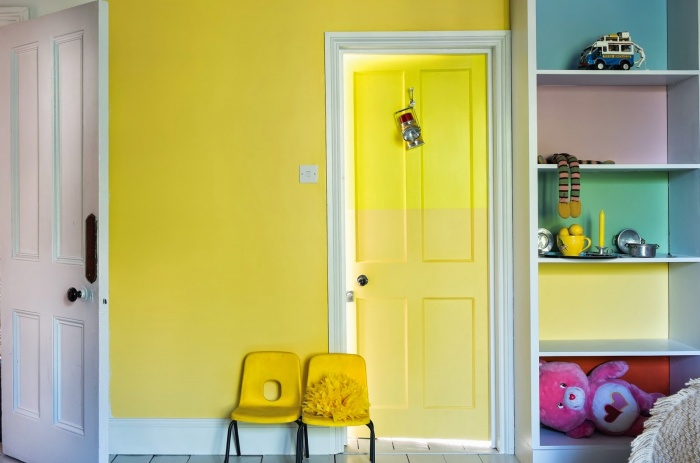
Water-based paints are chosen not only because of beauty, their main advantage is practicality. It can be a washable or abrasion-resistant surface, a wall that can pass air and prevent mold. The main thing is to prioritize and choose the right material for repair.
Finishing the inside of a house or apartment is a very complex and time-consuming process, in which water-based paint will help. It is important to approach the repair and decoration with special attention and caution. The desire to save money, and sometimes just a craving for new experience and knowledge, makes ordinary people do the repairs yourself.
For finishing the premises, a water-based emulsion is mainly used. It is very high quality and available material. The paint is easy to apply clean surfaces(concrete, wood, plaster and others), it is completely environmentally friendly.
Advantages and disadvantages
One of the main advantages of water-based paint is its affordable cost. The quality of this material is quite capable of competing with upscale oil paints. Using color, you can easily choose the desired color shade.
But, the most important advantage of water-based paint over analogues is speed. It dries to the max. short time Sometimes just a few hours is enough.
It is noteworthy that during the processing of the premises you do not even need to leave the room. The dye is completely safe, it does not cause any harm to living organisms or the environment.
Another advantage is the absence bad smell, which is usually stored in the room for several weeks after finishing is completed. With the help of various pigment dyes, the substance can be given absolutely any color of your choice.
Usually in hardware stores on the counter, a colorless or white version, but a choice of additional pigment is attached to it. This is necessary so that the buyer can independently choose a shade, and the seller will give the desired color on the spot.
The process of applying paint to any surface is very simple, after work the tools are cleaned without difficulty, the substance does not stick to them.
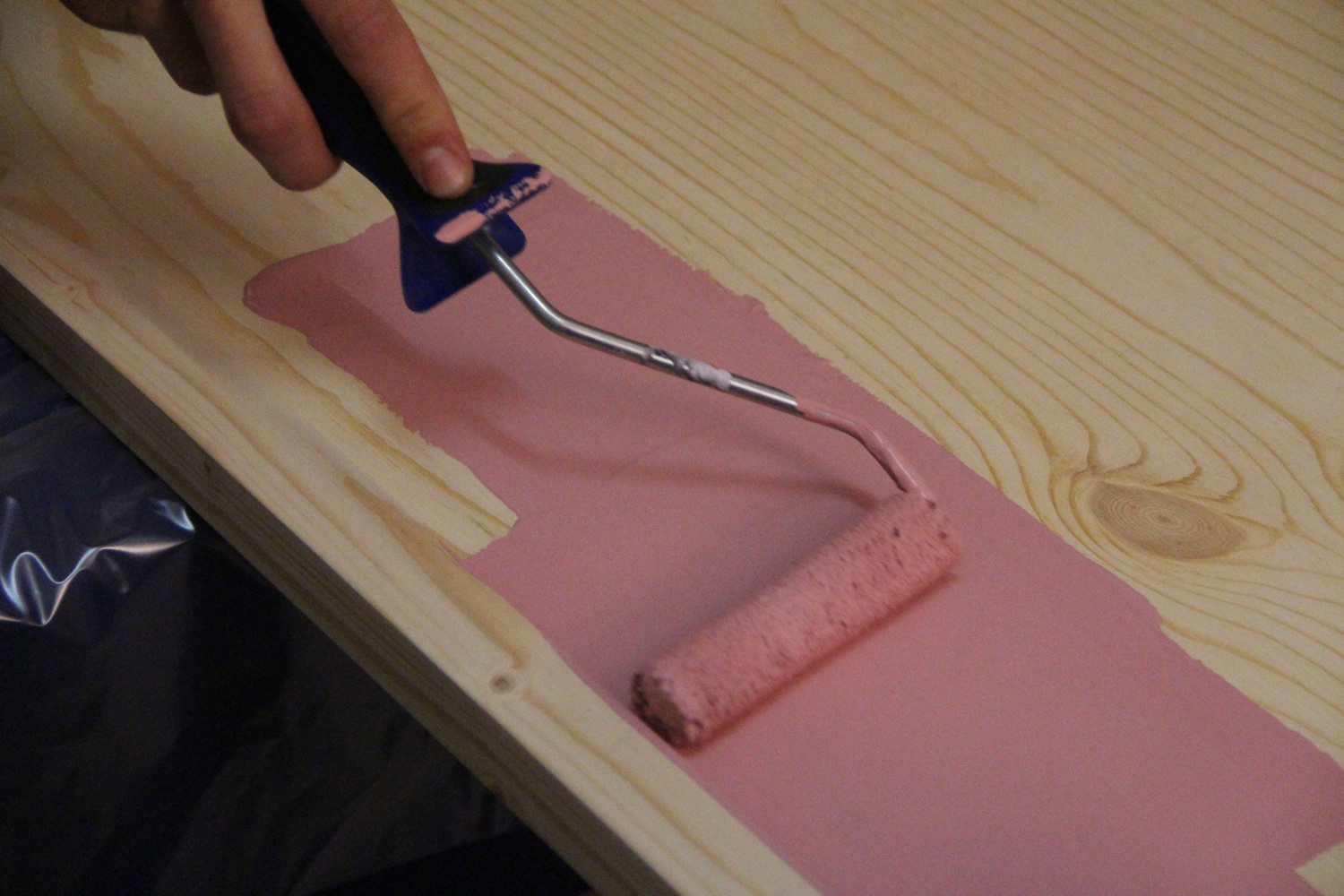
There is only one significant drawback of water-based paint. The fact is that the material can be applied to the surface only when minimum temperature air +5 degrees.
Characteristics of water-based paints
Before choosing a paint, it is important to carefully study all the technical characteristics of the product indicated on the package:
- chemical composition of water-based paint;
- consumption;
- specific gravity;
- storage recommendations;
- best before date;
- viscosity.
Most paints contain fillers, additives, an antiseptic and a thickening element. Consumption building material approximately as follows: one layer takes about 150-200 ml / m². The number of layers will directly depend on the ability of the selected base to absorb paint.
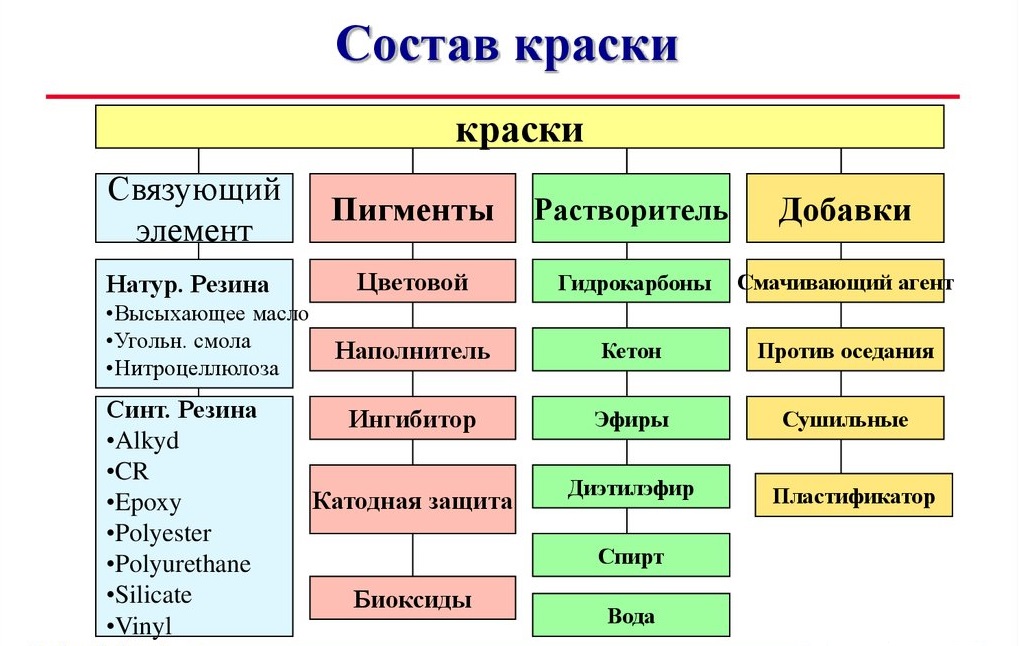
The viscosity index allows you to calculate how much water is needed to dilute the mixture. It is measured with a viscometer. In normal paint, it ranges from 40 to 45 s. when using a brush for painting and from 20 to 25 when using a spray gun. The specific gravity is approximately 1.35 kg/l.
Drying time is influenced by room temperature and air dryness. The paint can dry from 2 hours to a day. Optimal Performance indoor climate - temperature 20 degrees, humidity 65-70%.
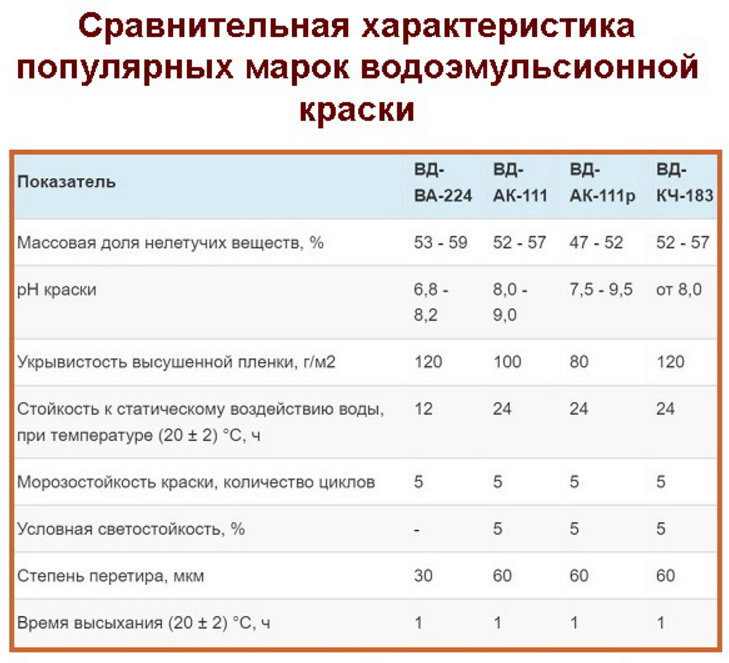
On the video: what is water-based paint.
Varieties
Today, on the shelves of hardware stores you can find only four types of water-based paints. Their difference lies in the polymer that is included in the composition, so you need to choose with care. The main types of water-based paints:
- silicate;
- acrylic;
- Mineral;
- Silicone.
acrylic paint
This is perhaps the most popular and affordable type of water-based paint. Acrylic resin acts as the main component, which is why the substance got its name. Often, manufacturers dilute the composition with latex.

This solution allows acrylic paint to actively resist water and protect the surface. It turns out that the painted surface can be washed with a liquid without problems, without worrying that the paint will lose color, peel off and become unusable.

Often, manufacturers on cans indicate that the paint can withstand up to 5 thousand washing cycles with plain water. With the help of a double layer of a substance diluted with a latex filler, cracks and depressions on the surface up to 1 mm deep can be easily masked. The price of one container is affected by technical characteristics (composition, filling, etc.).
water emulsion acrylic paint perfectly lays down on wooden, glass, brick and plastered surfaces. You can also apply the material on a metal base, but it must first be primed.
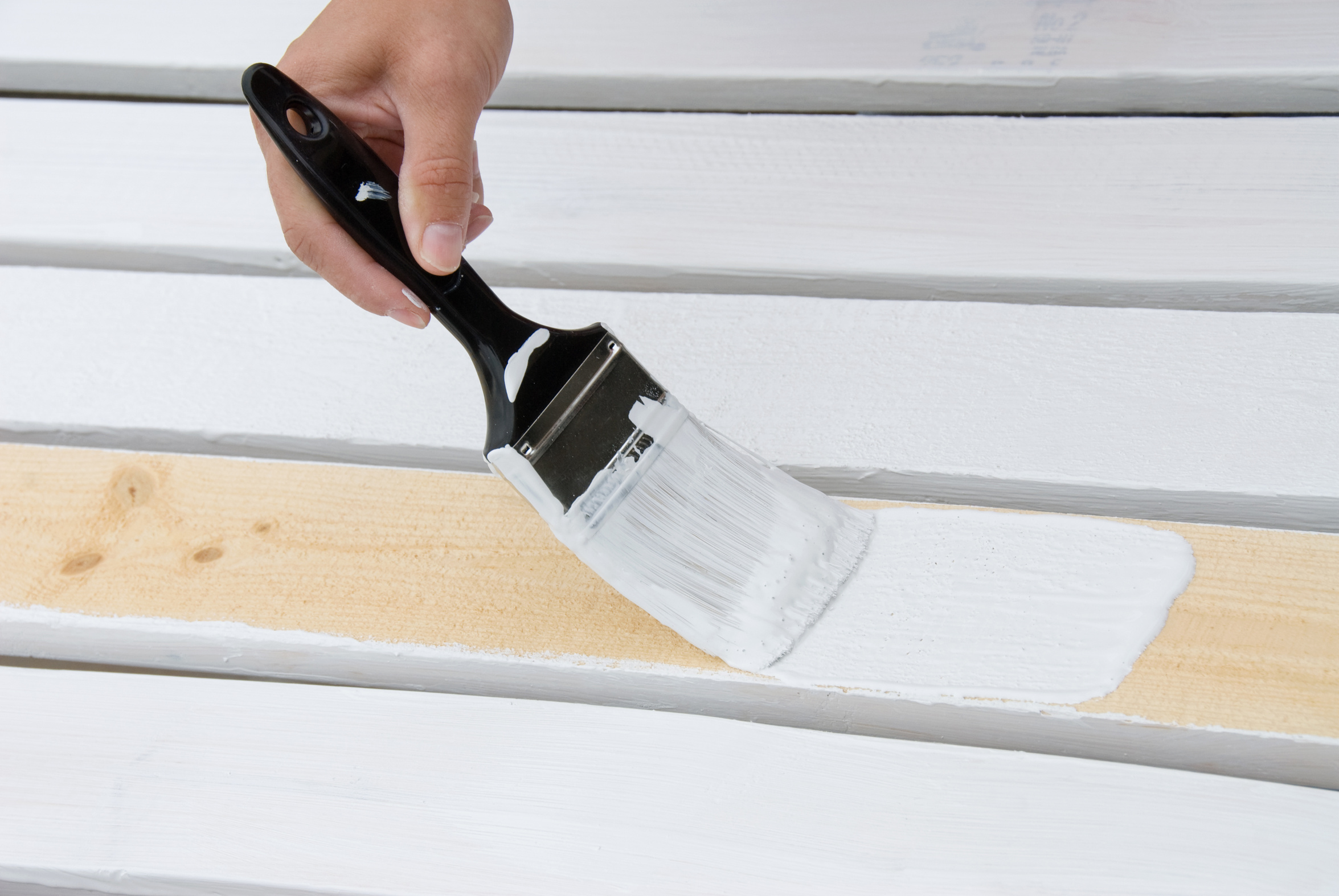
silicone paint
The composition of this paint includes silicone resin (the situation is the same as with acrylic). The cost of one can is slightly higher. The paint is excellent for processing mineral surfaces and can easily cope with cracks up to 2 mm deep.
Silicone water-based paint for walls and ceilings belongs to the category of a vapor-permeable component. This property allows you to apply the substance on damp, as well as surfaces exposed to increased moisture. The paint helps to get rid of the fungus.
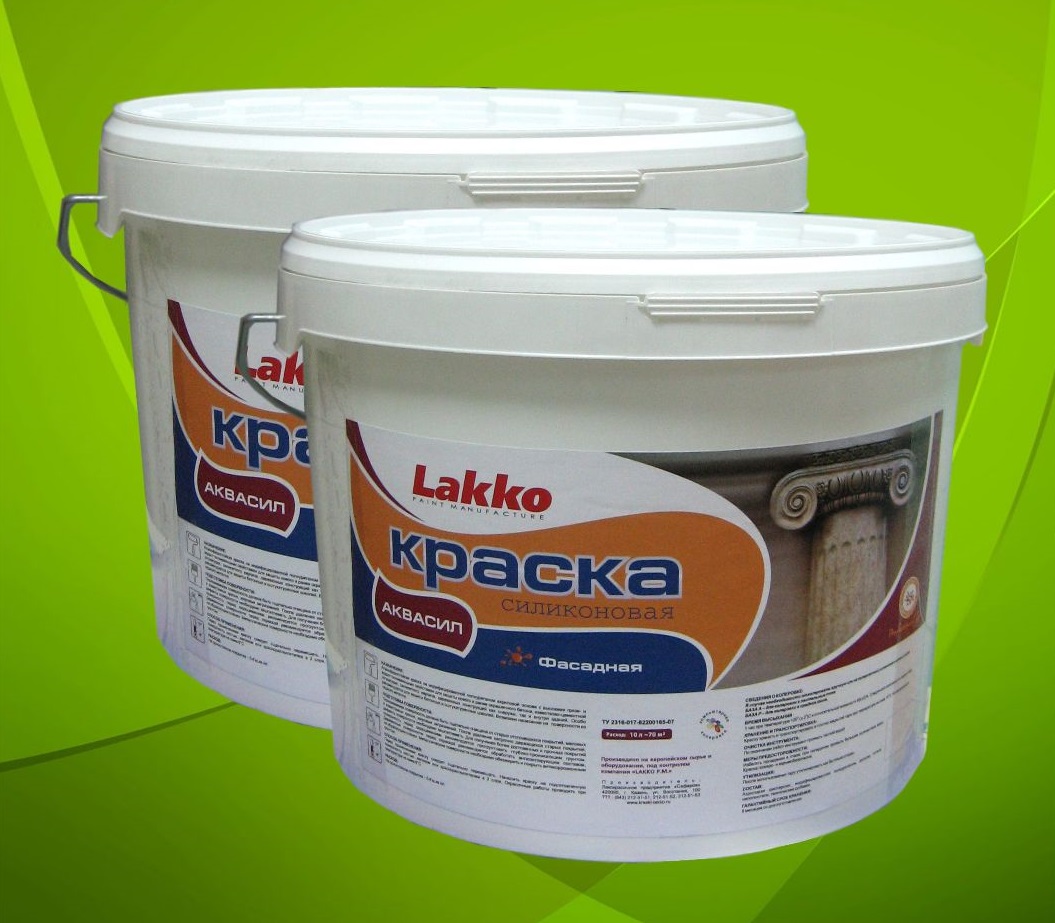
silicate paint
Silicate water-based paint is built on the basis of a mixture of different components: a solution of water, liquid glass and pigments of different colors. It's a variety finishing material has excellent vapor and air permeability characteristics, serves excellent protection from environment. Emulsion paint of this type can easily last more than 20 years.
If the atmosphere in the room is much wetter than the painted surface itself, then it is not recommended to use this type of water-based paint. In such conditions, it will not last long enough.

mineral paint
Almost all mineral water-based paints consist of slaked lime, and sometimes cement. She is one of best solutions for application on ceilings and walls in the room. The main purpose of this dye is to work with surfaces made of concrete or brick. However, mineral paint has one serious drawback - relatively short term services.
A water-based polyvinyl acetate composition is obtained by grinding various pigments on a polyvinyl acetate emulsion paint. The advantage of this solution is that dilution with water makes it possible to work with the substance even indoors (completely safe and non-toxic).
When dried, a sufficiently strong film layer is obtained, which well protects the surface from moisture, grease and oils of mineral origin. Also, water-based paint for walls is light-resistant.
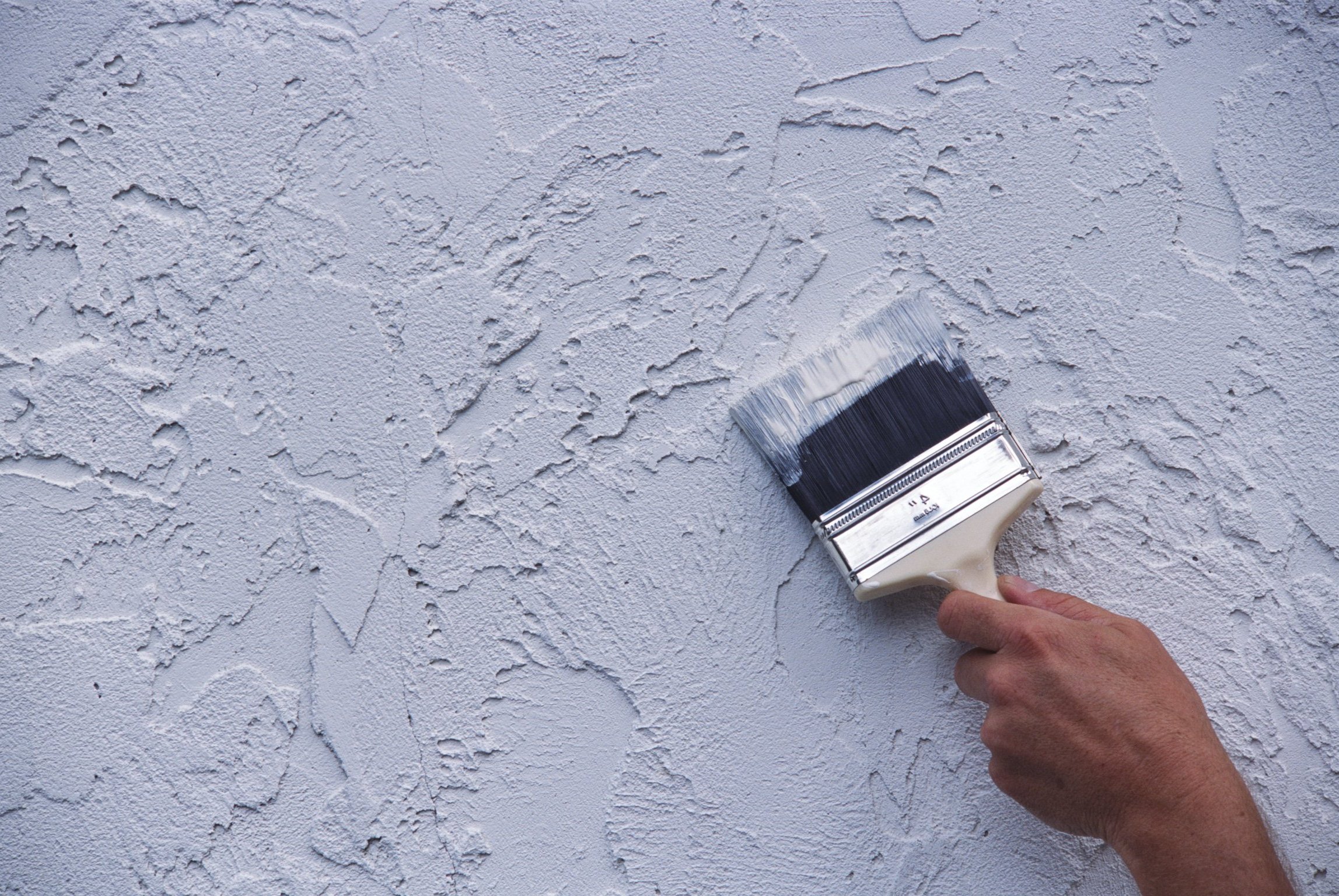
How to paint walls correctly
Recommended before starting construction works completely free the room from unnecessary things, even out all the irregularities of the wall, apply a layer of putty and rinse the surface if necessary. Despite the safety of paints, it is better not to forget about a respirator, glasses and protective gloves.
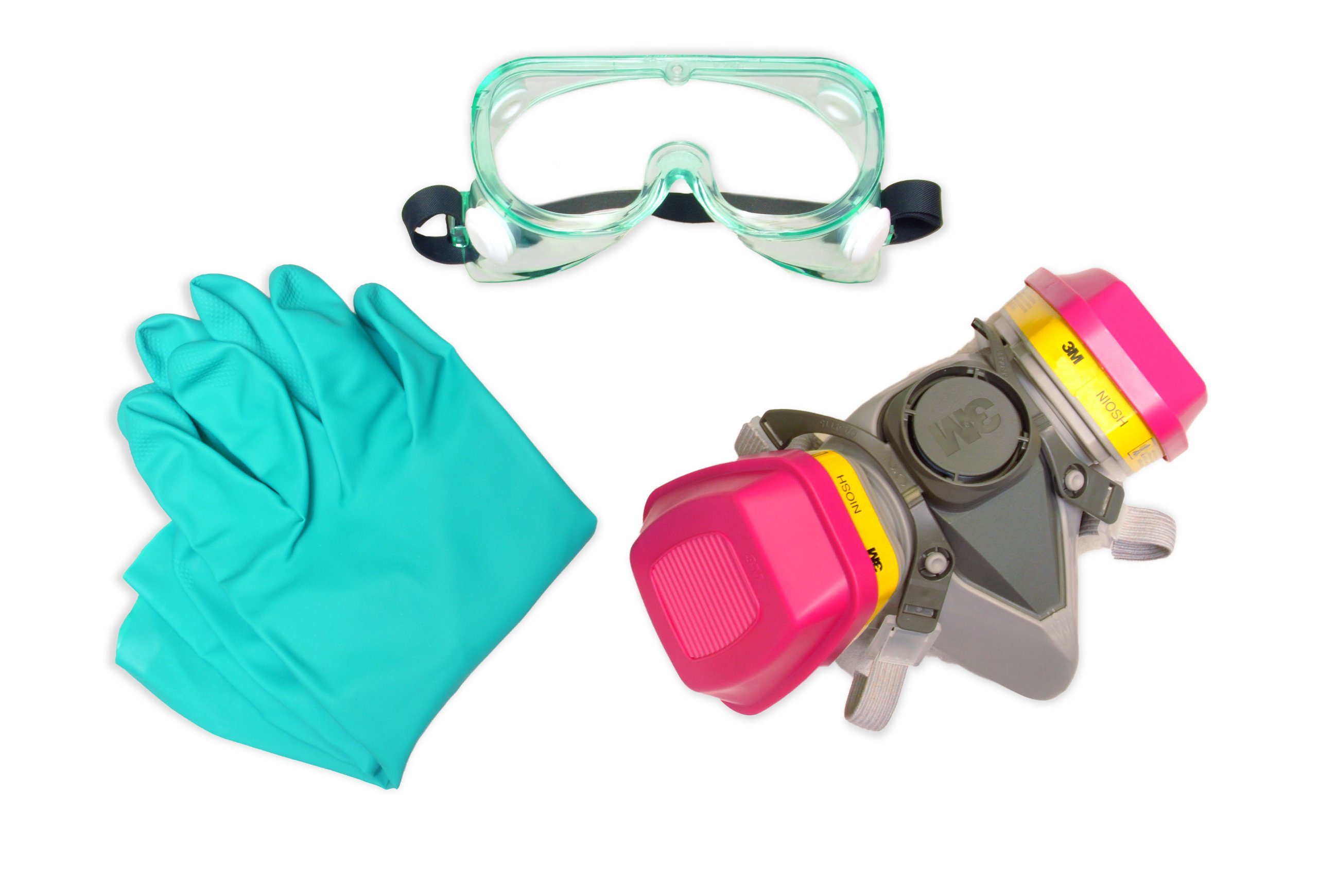
If water-based wall paint is applied to the putty part, then only three layers need to be created, the first of which will be the ground base. When processing a surface with wallpaper, only 2 layers are enough.
It is important that the white emulsion paint is applied in two stages, in neat parallel lines. It is better to move from the window to the far end of the room. For achievement best result you can get help special equipment. The most popular device is the spray gun.
The spray gun for applying emulsion paint is special device, able to paint any wall without any gaps and streaks. Fixtures are different high level performance and large area coverage.
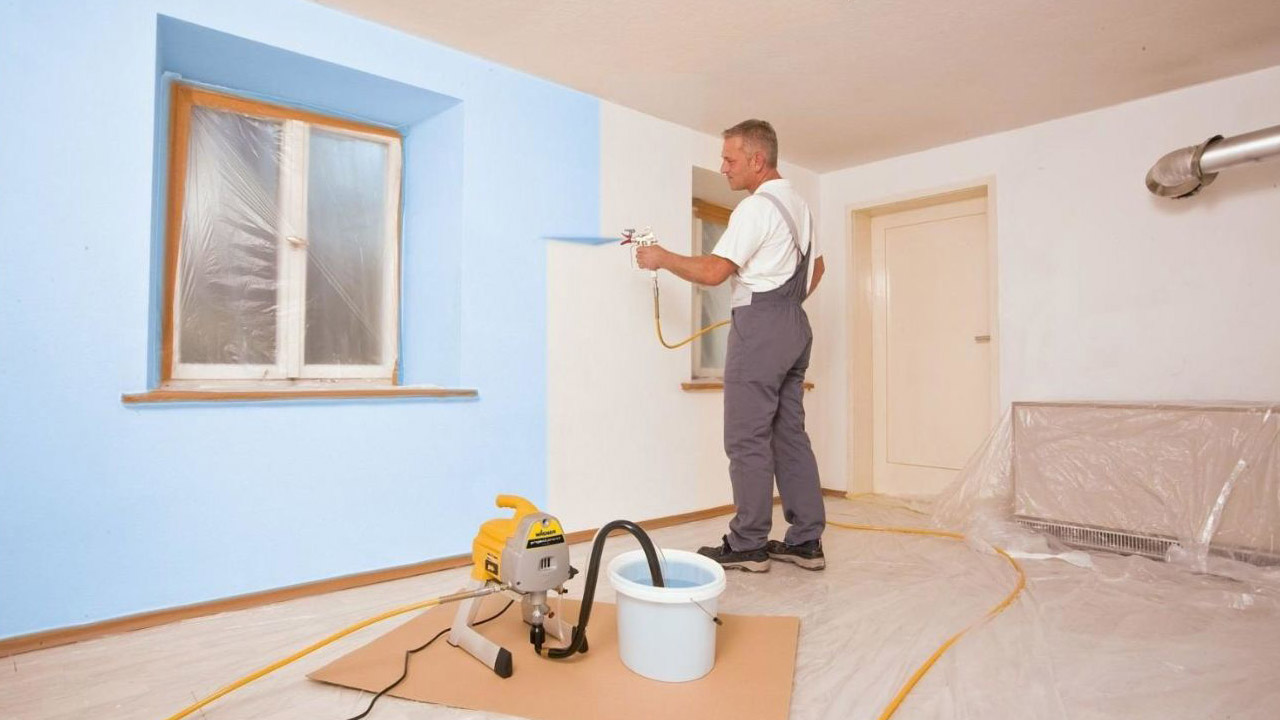
The use of water-based paint for interior work may require a conventional brush. It is better to choose a wide size - 100 or 250 mm. The brush is immersed in the paint for a third of its length, then pressed against the wall of the can so that the whole excess fluid glass back. The paint is applied in neat short horizontal or vertical strokes along a path from top to bottom.
Perhaps the simplest and most common tool for applying paint is a roller. However, when using it, more layers will be required, since the roller applies the paint too thinly.
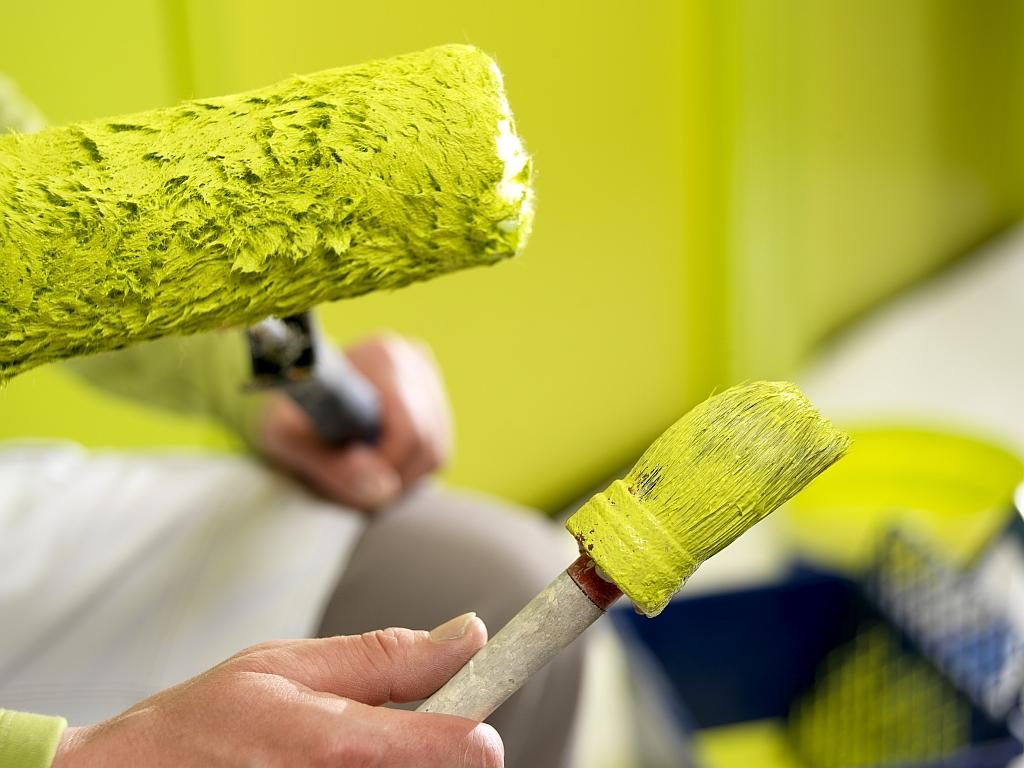
The pan is about 1/3 filled with liquid, then the roller is lowered into the paint and rolled back and forth several times to soak up more. This allows the material to be evenly distributed. Then you can start the staining process. The roller with uniform movements due to light pressure applies paint to the wall. It is important to do everything carefully and without haste, so as not to stain or spill anything.
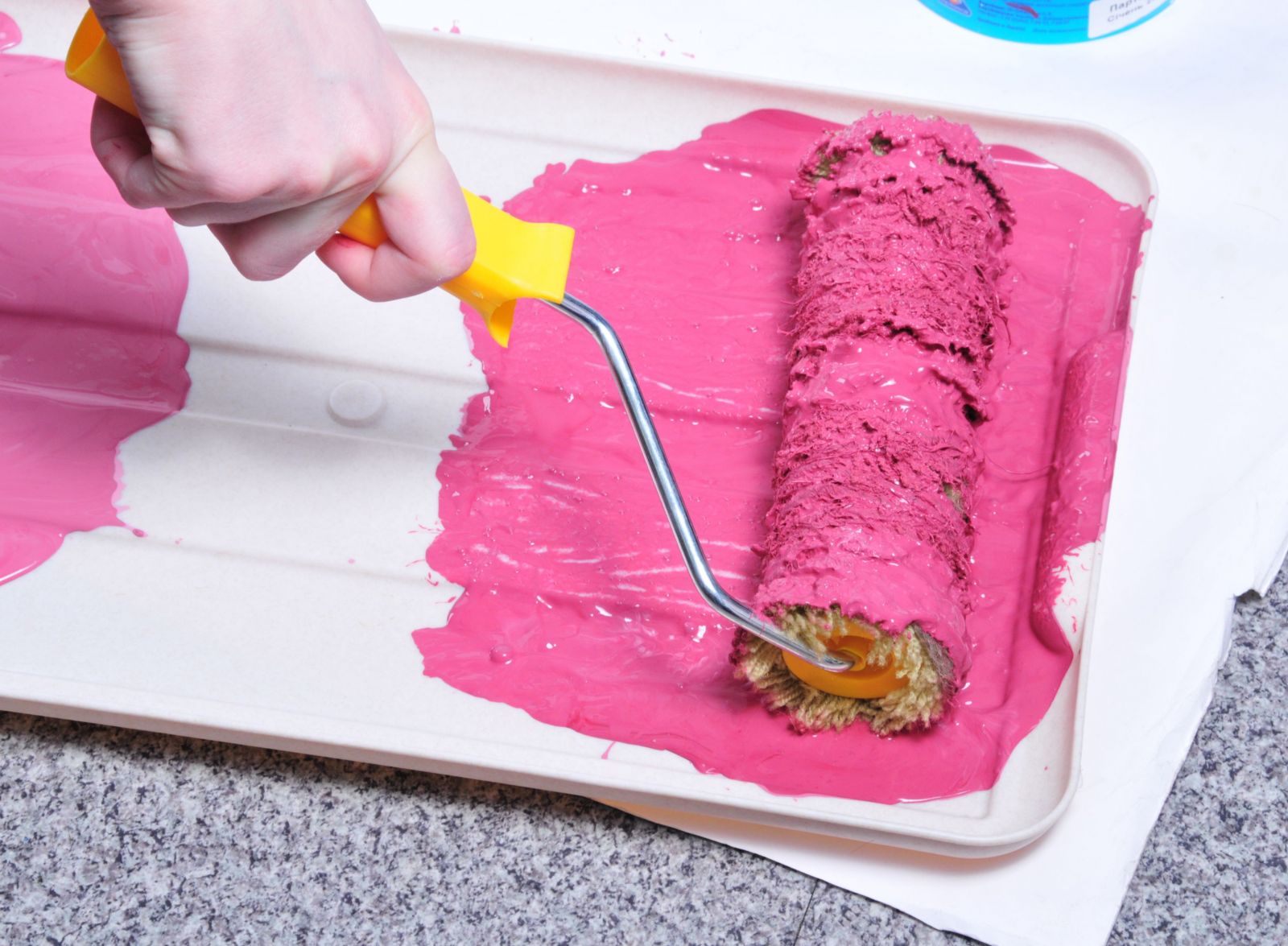
How to paint the ceiling
It is very important to distribute all the paint evenly over the entire area of the ceiling. The roller is covered with one layer, rolled out on a patch, and then on a pre-prepared sheet of linoleum (you can take any similar material). If you immediately start painting the ceiling, then everything will turn out unevenly, even if white paint is used. And after a while, spots will appear that are very difficult to get rid of.
The paint is also applied in parallel lines that slightly overlap each other. One layer is applied within half an hour, for an ideal result 3 layers are needed. The thinner they are, the better and more even the color of the ceiling will be after drying).
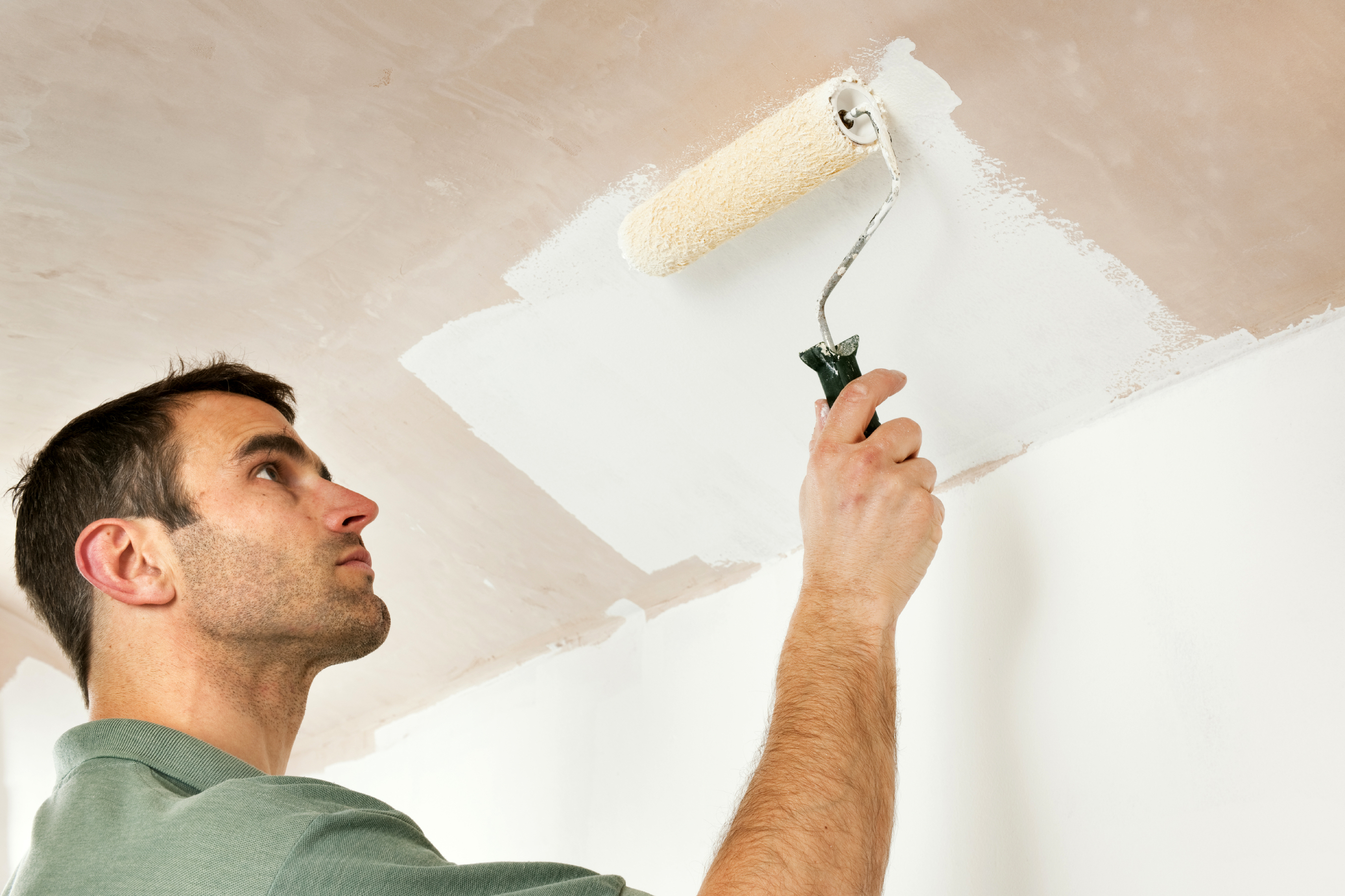
The final layer should be directed towards the light. This trick will help hide all the irregularities in the color of the ceiling. After applying the main part, you can proceed to the areas where the bleached roller could not be reached (a brush is used).
How to remove paint
Technical characteristics affect the causticity of a substance. The easiest way to get rid of PVA-based paint is enough with a regular sponge and soapy water. Acrylic resin is very resistant to various influences, it requires the use of chemicals and spatula.
You can try to remove the paint with a chisel (this is quite difficult, but the result is better). There are also special chemical washes that are applied to the surface and destroy the coloring matter.

